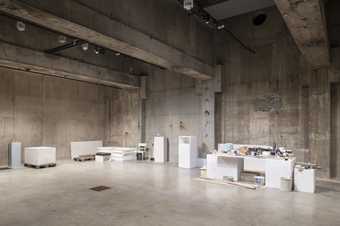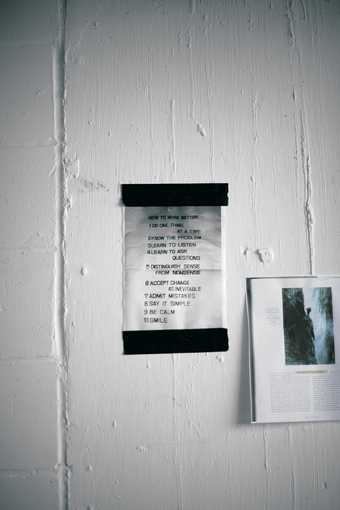Explore the witty recreations of everyday objects in this installation by Peter Fischli and David Weiss
At first glance Untitled (Tate) 1992–2000 appears to be a work in progress. The gallery is littered with the kinds of tools and rubbish found in a construction site or workshop. In fact, every element is a polyurethane sculpture. Each has been meticulously carved and painted to seem indistinguishable from the original objects.
To make this artwork, Fischli and Weiss spent a long time imitating cheap, mass-produced objects. They saw something subversive in devoting so much time and skill to recreating such banal things. They described their slow working method as ‘concentrated daydreaming’.
Untitled (Tate) plays with the division between real life and art. Like a three-dimensional trompe-l’oeil still-life painting, the installation tricks the eye. It reverses artist Marcel Duchamp’s notion of the readymade. This is when an everyday object is presented in an art gallery as an artwork. The artists said:
‘Duchamp’s objects could revert back to everyday life at any point in time. Our objects can’t do that; they’re only there to be contemplated. They’re all objects from the world of utility and function, but they’ve become utterly useless.’
The installation was commissioned for the opening of Tate Modern in 2000. This building once housed Bankside Power Station. It too was transformed from a place with a practical function to a site for contemplation and learning: a different kind of use.



